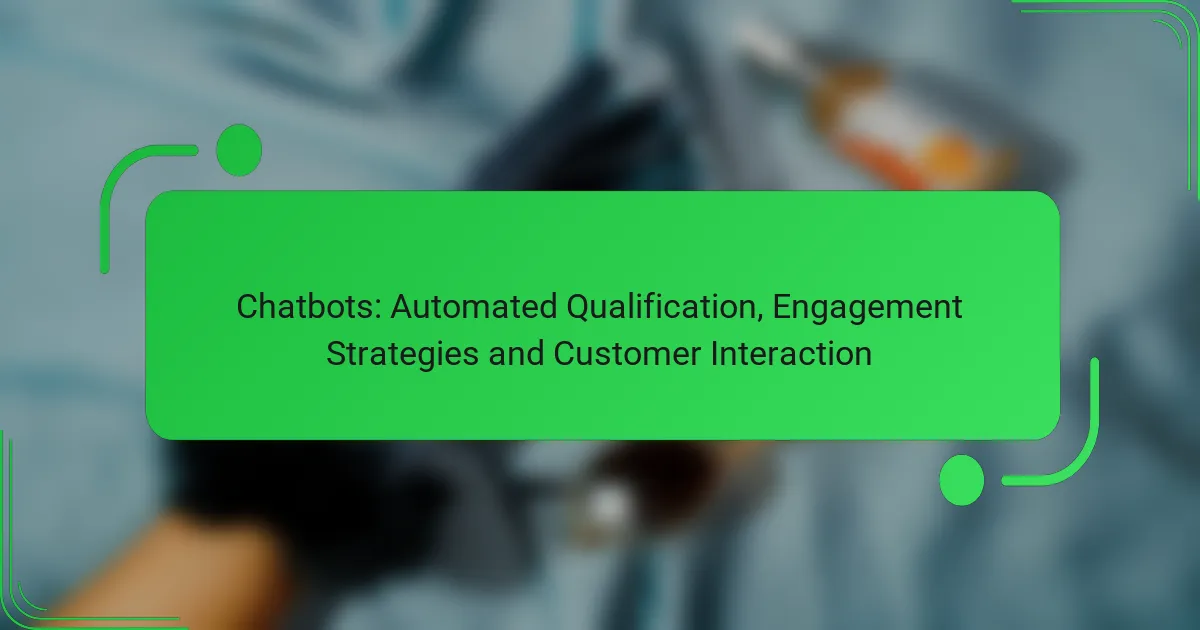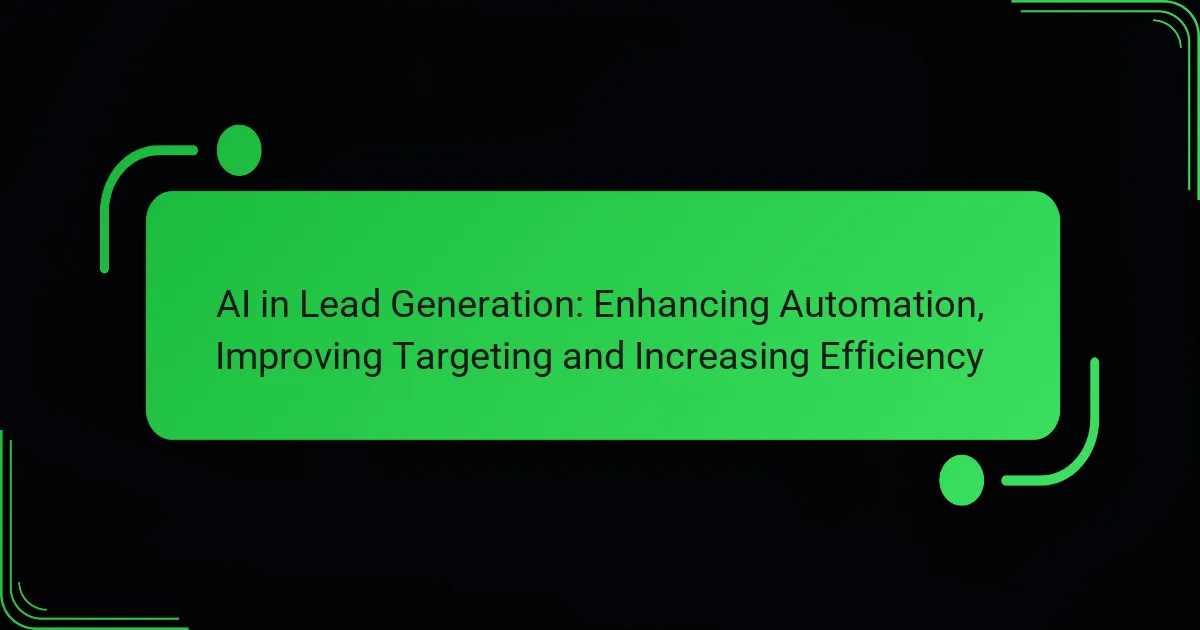Chatbots are revolutionizing customer qualification and engagement by automating interactions and efficiently gathering information from potential leads. By employing personalized messaging and proactive outreach strategies, businesses can enhance user experiences and drive conversions while providing immediate assistance around the clock.
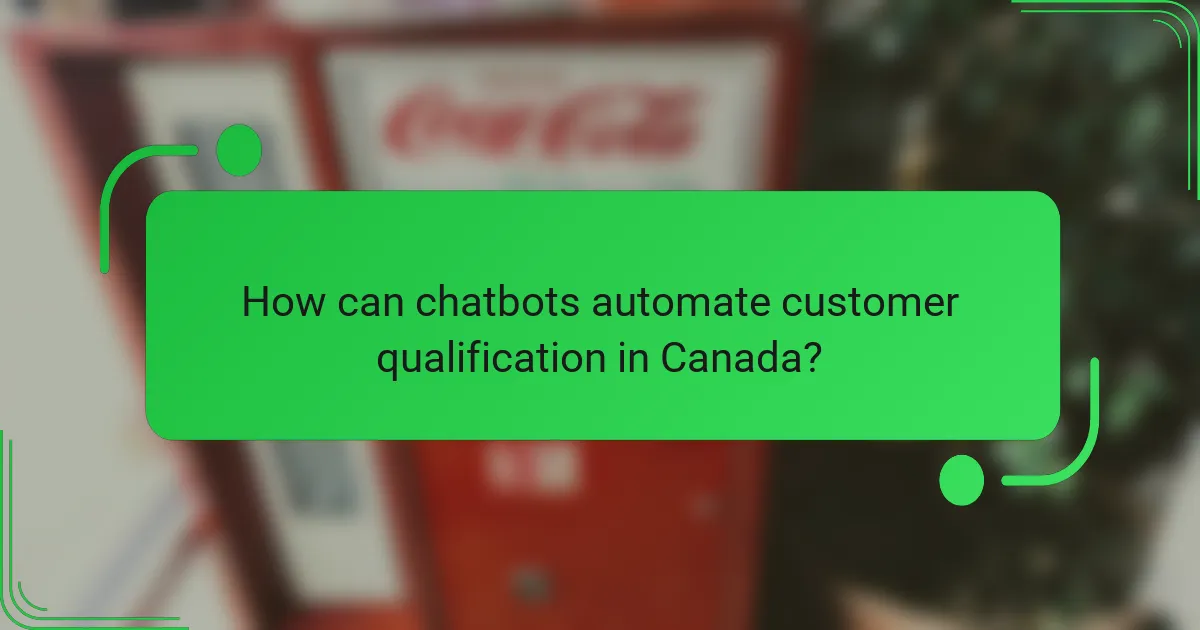
How can chatbots automate customer qualification in Canada?
Chatbots can significantly streamline customer qualification processes in Canada by efficiently gathering and analyzing information from potential leads. By automating interactions, businesses can quickly determine which prospects are most likely to convert, saving time and resources.
AI-driven lead scoring
AI-driven lead scoring utilizes algorithms to evaluate and rank potential customers based on their interactions and behaviors. This technology analyzes data points such as website visits, engagement levels, and demographic information to assign scores that indicate a lead’s likelihood to convert.
For Canadian businesses, integrating AI-driven lead scoring can enhance targeting strategies. By focusing on high-scoring leads, companies can allocate resources more effectively and improve conversion rates.
Pre-qualification questionnaires
Pre-qualification questionnaires are automated forms that chatbots use to gather essential information from leads. These questionnaires can include questions about budget, needs, and timeline, allowing businesses to assess a lead’s suitability quickly.
In Canada, tailoring these questionnaires to reflect local preferences and terminology can improve response rates. For example, asking about specific Canadian regulations or industry standards can provide valuable insights into a lead’s readiness to engage.
Integration with CRM systems
Integrating chatbots with Customer Relationship Management (CRM) systems enables seamless data transfer and management. This integration allows chatbots to automatically update lead information and track interactions, ensuring that sales teams have access to the latest data.
Canadian businesses can benefit from this integration by maintaining organized records of customer interactions, which can enhance follow-up strategies and improve overall customer engagement.
Real-time data analysis
Real-time data analysis allows chatbots to process and interpret customer interactions as they happen. This capability enables businesses to adjust their strategies on the fly, responding to customer needs and preferences immediately.
For companies operating in Canada, leveraging real-time data can lead to more personalized customer experiences. By analyzing trends and behaviors, businesses can refine their qualification processes and enhance engagement strategies effectively.

What engagement strategies are effective for chatbots?
Effective engagement strategies for chatbots include personalized messaging, proactive outreach, multichannel support, and gamification techniques. These approaches enhance user interaction, improve customer satisfaction, and drive conversions.
Personalized messaging
Personalized messaging tailors communication to individual users based on their preferences and behaviors. By utilizing data such as previous interactions and demographic information, chatbots can create a more relevant experience that resonates with users.
For example, a chatbot can greet returning customers by name and suggest products based on their past purchases. This level of personalization can significantly increase engagement and foster loyalty.
Proactive outreach
Proactive outreach involves initiating conversations with users rather than waiting for them to engage. Chatbots can monitor user activity on a website or app and send timely messages to offer assistance or provide information.
For instance, if a user lingers on a product page, the chatbot might pop up with a message like, “Need help deciding? I’m here to answer your questions!” This approach can reduce bounce rates and encourage users to take action.
Multichannel support
Multichannel support ensures that chatbots are accessible across various platforms, such as websites, social media, and messaging apps. This strategy allows users to interact with the chatbot in their preferred environment, enhancing convenience and engagement.
Implementing a consistent chatbot experience across channels can help maintain user interest. For example, a customer might start a conversation on Facebook Messenger and continue it on the company website without losing context.
Gamification techniques
Gamification techniques incorporate game-like elements into chatbot interactions to make them more engaging. This can include quizzes, rewards, or challenges that encourage users to participate actively.
For example, a chatbot might offer points for completing certain tasks or answering questions correctly, which can be redeemed for discounts or special offers. This strategy not only boosts engagement but also incentivizes users to return and interact more frequently.
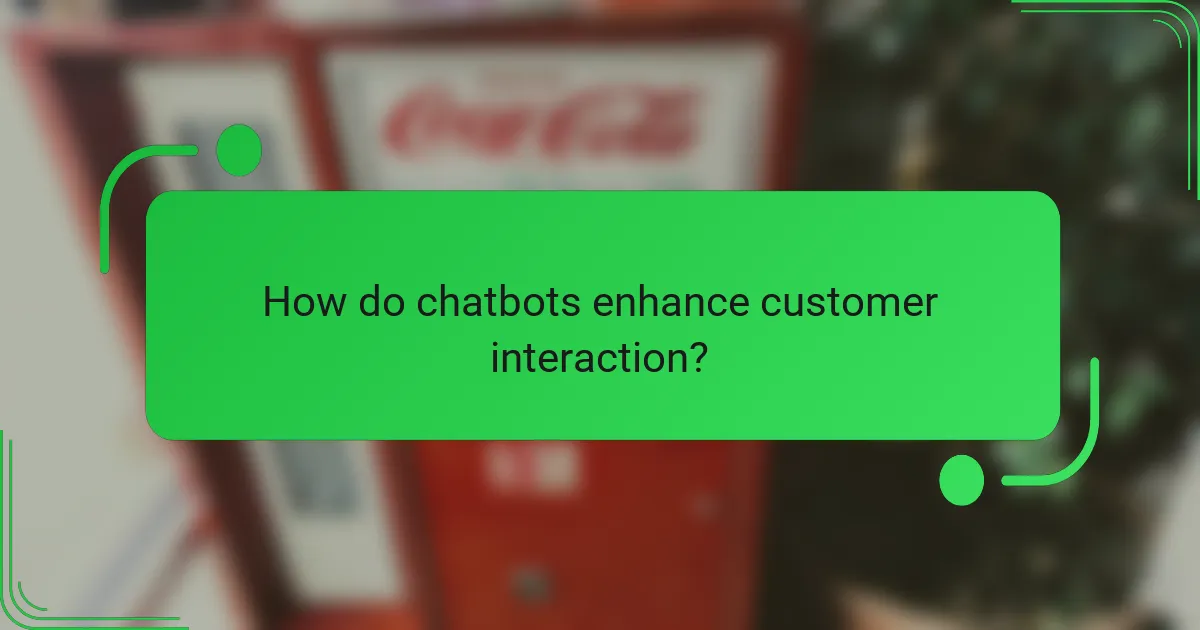
How do chatbots enhance customer interaction?
Chatbots enhance customer interaction by providing immediate assistance and personalized experiences. They streamline communication, allowing businesses to engage with customers effectively and efficiently, regardless of the time of day.
24/7 availability
Chatbots offer round-the-clock availability, ensuring customers can receive support at any hour. This constant access can significantly improve customer satisfaction, as users no longer need to wait for business hours to get answers to their queries.
For businesses, this means they can handle inquiries outside of traditional working hours, catering to a global audience. This is particularly beneficial for companies operating in multiple time zones, as it allows them to maintain a competitive edge.
Instant response times
One of the key advantages of chatbots is their ability to provide instant responses to customer inquiries. Most chatbots can reply within milliseconds, which is crucial for maintaining user engagement and reducing frustration.
Quick response times can lead to higher conversion rates, as potential customers are more likely to proceed with a purchase when their questions are answered promptly. Businesses should ensure their chatbots are programmed to handle common queries efficiently to maximize this benefit.
Contextual understanding
Chatbots equipped with contextual understanding can interpret user intent and respond appropriately based on previous interactions. This capability allows for more meaningful conversations and enhances the overall customer experience.
To improve contextual understanding, businesses should regularly update their chatbot’s knowledge base and train it on customer interactions. This helps the chatbot learn from past conversations, making it more adept at handling complex queries and providing relevant information.
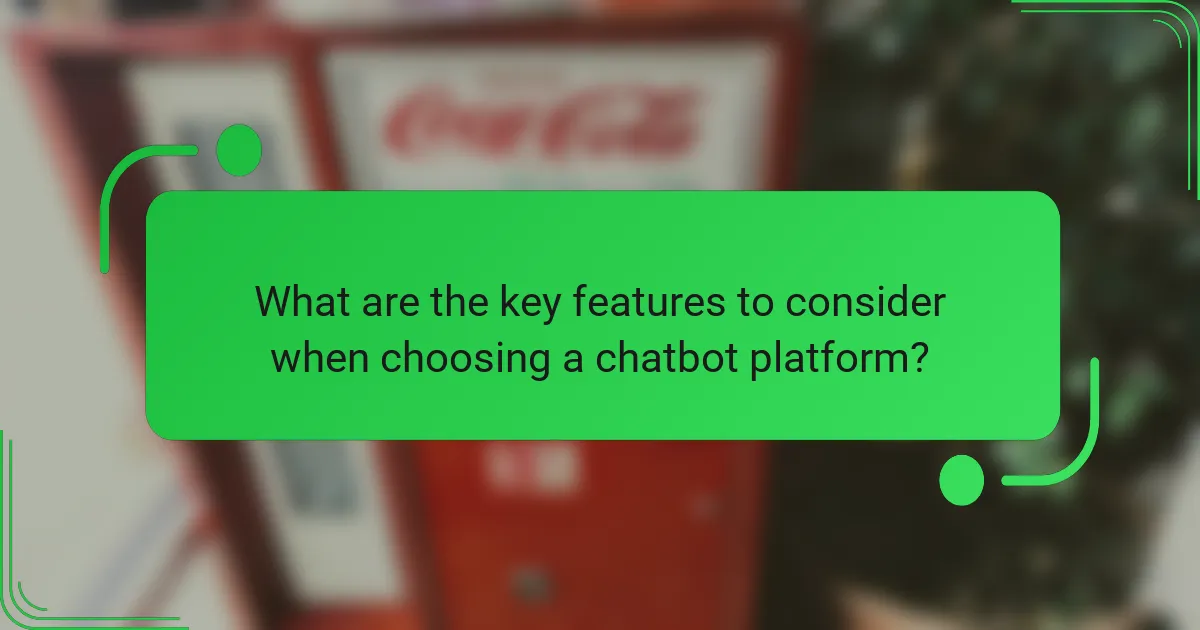
What are the key features to consider when choosing a chatbot platform?
When selecting a chatbot platform, focus on features that enhance user interaction and streamline integration. Key considerations include natural language processing capabilities, integration options with existing tools, and a user-friendly interface.
Natural language processing capabilities
Natural language processing (NLP) is crucial for understanding and responding to user queries effectively. Look for platforms that support advanced NLP features, enabling the chatbot to comprehend context, intent, and sentiment. This capability can significantly improve user satisfaction by providing more accurate and relevant responses.
Evaluate the platform’s ability to handle multiple languages and dialects if your audience is diverse. A chatbot that can understand variations in language will cater to a broader user base, enhancing engagement.
Integration options with existing tools
Integration with existing tools is essential for seamless operations. Choose a chatbot platform that can easily connect with your current CRM, email marketing software, and other customer service tools. This interoperability allows for streamlined workflows and better data management.
Consider platforms that offer APIs or pre-built connectors for popular applications. This flexibility can save time and resources during implementation, ensuring that your chatbot can leverage existing data and systems effectively.
User-friendly interface
A user-friendly interface is vital for both the chatbot’s design and the backend management system. Ensure that the platform allows for easy customization of the chatbot’s appearance and conversation flows without requiring extensive coding knowledge.
Look for intuitive dashboards that enable quick adjustments and analytics tracking. A straightforward interface helps your team manage the chatbot efficiently, leading to better performance and user experience over time.

How do chatbots impact lead generation in Canada?
Chatbots significantly enhance lead generation in Canada by automating initial customer interactions and qualifying leads efficiently. They engage potential customers in real-time, providing instant responses that can capture interest and drive conversions.
Increased conversion rates
Chatbots can lead to higher conversion rates by engaging visitors immediately when they land on a website. By answering questions and guiding users through the sales funnel, chatbots help reduce drop-off rates. For instance, businesses using chatbots often see conversion improvements ranging from 20% to 30% compared to traditional methods.
To maximize conversion rates, ensure that the chatbot is programmed to handle common inquiries and can seamlessly transfer complex questions to human agents. This hybrid approach keeps potential leads engaged while providing them with the information they need to make decisions.
Cost-effective customer acquisition
Utilizing chatbots for customer acquisition can significantly lower costs compared to traditional marketing strategies. By automating responses and qualifying leads, businesses can reduce the need for extensive customer service teams, leading to savings on labor costs. Many companies report a decrease in customer acquisition costs by up to 50% when implementing chatbot solutions.
To effectively leverage chatbots for cost savings, focus on integrating them with existing marketing tools and customer relationship management (CRM) systems. This ensures that the chatbot can collect valuable data and insights, further optimizing the customer acquisition process.
